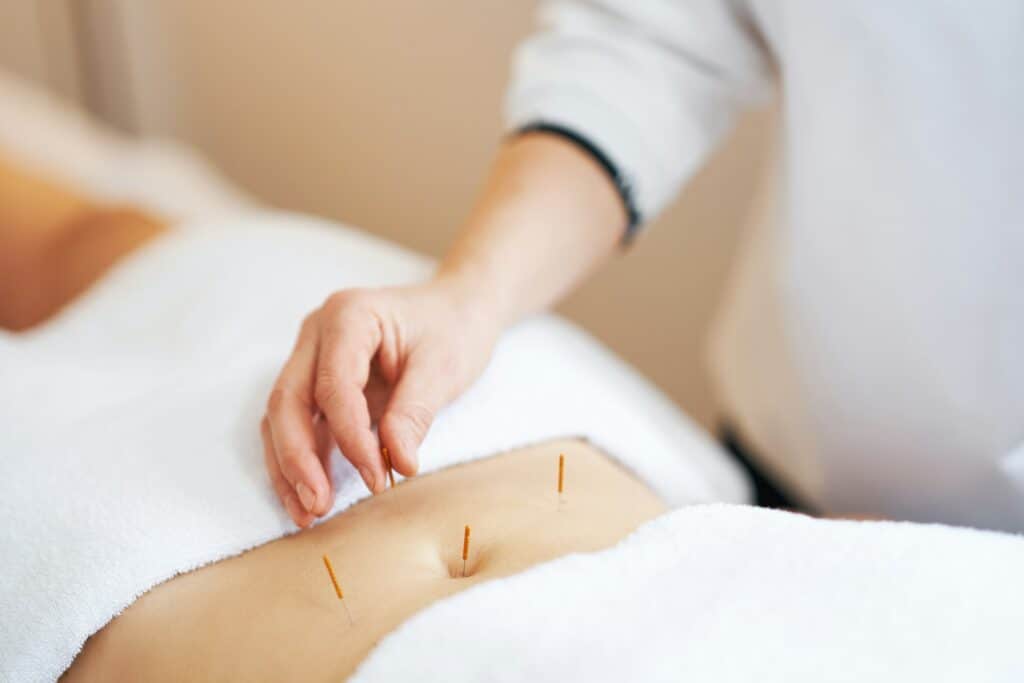Have you found yourself desperately searching for relief from liver cirrhosis symptoms? Perhaps you’ve experienced the restlessness that comes with declining liver function, or perhaps you’re one of the millions globally that suffers from this condition that is fast becoming a leading cause of mortality. Wouldn’t it be refreshing to have access to an alternative method to help manage your well-being? Introducing acupressure for liver cirrhosis, an intriguing approach rooted in traditional Chinese medicine that has been time-tested for thousands of years.
Brief Overview of Liver Cirrhosis
Liver cirrhosis represents the final stage of chronic liver disease, characterized by the proliferation of scar tissue that disrupts the normal functioning of the liver. This condition is wrought with complications and symptoms such as fatigue, loss of appetite, swelling in the legs and abdomen, and yellow discoloration of the skin and eyes. A standard course of treatment often involves medications, lifestyle changes such as abstinence from alcohol and maintaining healthy dietary habits.
The Role of Acupressure in Managing Liver Cirrhosis
While traditional methods of managing liver cirrhosis can have their benefits, they may not be enough, especially for those wanting to avoid the side effects of long-term medication use. This is where acupressure comes into the scene as a complementary approach that’s non-invasive, safe, and can be practiced right at home.
Note: Acupressure should be seen as a complement to your medical treatment. It does not substitute consulting with your healthcare provider about your symptoms.
Role of Acupressure
– Complementary therapy to existing treatments.
– Non-invasive and safe.
– Convenient to be administered at home.
– Can provide relief from symptoms.

Understanding Acupressure
Acupressure is a traditional Chinese therapeutic technique that has been used for centuries to promote health and wellness. It works on the principle of life energy, or ‘qi’, flowing through ‘meridians’ or pathways in our bodies.
What is Acupressure?
Acupressure is a form of touch therapy that utilizes the principles of acupuncture and Chinese medicine. In acupressure, the same points on the body are used as in acupuncture, but are stimulated with finger pressure instead of with the insertion of needles. Acupressure is used to relieve a variety of symptoms and pain.
How Does Acupressure Work?
Acupressure works by applying pressure to specific points on the body to stimulate the body’s self-healing abilities. When these points are pressed, they release muscular tension and promote the circulation of blood and the body’s life force energy to aid healing. According to Chinese medical theory, these acupressure points lie along meridians in our body. The vital energy or ‘qi’ flows through these meridians and when any point is blocked, it can lead to discomfort or even disease. Acupressure helps in clearing these blockages and allows the energy to flow freely, promoting overall health and vitality.
The Benefits of Acupressure for Liver Health
Acupressure can be particularly beneficial for liver health. By stimulating certain points, it can help to improve liver function and alleviate symptoms associated with liver diseases like cirrhosis. Here are some potential benefits of using acupressure for liver cirrhosis:
- Improves Circulation: Acupressure can help in improving circulation in the body, which is particularly beneficial for the liver as it aids in detoxification and the efficient functioning of the organ.
- Reduces Pain and Discomfort: Many patients with liver cirrhosis experience abdominal pain and discomfort. Acupressure can help to relieve this by reducing muscular tension and promoting relaxation.
- Promotes Detoxification: As mentioned in ActiveMed Integrative Health, acupressure, like acupuncture, can serve as a detoxifier, helping the liver to process toxins more effectively.
- Boosts Energy Levels: Liver diseases can often lead to fatigue and low energy levels. By stimulating specific points, acupressure can help to boost energy levels and improve overall wellbeing.
- Enhances Overall Liver Function: Regular acupressure sessions can enhance overall liver function, which can help to slow the progression of liver diseases like cirrhosis and improve quality of life.
While acupressure can provide relief from some symptoms of liver cirrhosis, it should not replace medical treatment. Always consult with your healthcare provider before starting any new treatment regimen. At ActiveMed Integrative Health Center, we’re always available to guide you in your journey towards better health.
Acupressure Points for Liver Cirrhosis
As part of our comprehensive approach to health at ActiveMed Integrative Health Center, we encourage exploring acupressure for liver cirrhosis. This method involves pressing specific points on the body to stimulate healing and improve organ function. Here are four crucial acupressure points that specifically target liver health:
Liver 3 (Supreme Rushing)
Located between the big and second toes on the top of the foot, the Liver 3 point, also known as Supreme Rushing, plays a crucial role in detoxifying the liver. By applying pressure to this area on both feet alternately, you enable the liver to perform its essential detoxification function more effectively. This acupressure point is also beneficial for managing headaches, lower back discomfort, eyesight issues, menstrual cramps, migraines, and sleeplessness.
Lower Qi Sea
You’ll find the Lower Qi Sea point three finger widths below the belly button on the body’s midline. Stimulating this spot boosts the immune system and alleviates fatigue, which is often a side effect of liver cirrhosis. Other benefits include relief from general weakness, headaches, body pains, abdominal cramps, constipation, and menstrual cramps.
Shu Mansion
Situated directly below the collarbone, the Shu Mansion is another notable detoxification point. By applying pressure to this area, you can regulate the function of the kidneys, which work alongside the liver to eliminate toxins. This acupressure point is also beneficial for various respiratory issues including asthma, tightness in the chest, and nasal congestion.
Middle of the Breastbone
Lastly, the Middle of the Breastbone point lies a little below the center of the breastbone. Stimulating this area helps in opening the chest and allowing qi (life force) to circulate easily through the lungs. It also aids in boosting the immune system, enhancing the body’s ability to fight disease, and reducing stress.

These acupressure points for liver cirrhosis have been used for hundreds of years in traditional Chinese medicine, and they continue to be beneficial today. In the next section, we’ll guide you on how to locate these points and apply pressure effectively.
How to Perform Acupressure for Liver Cirrhosis
Acupressure for liver cirrhosis can be an incredibly useful complementary therapy when done correctly. It’s relatively easy to perform at home once you understand the basics. Here’s how you can get started.
Locating the Acupressure Points
Finding the correct acupressure points is the first step. Here’s where you can find the three key points we discussed:
- Liver 3 (Supreme Rushing): This point is on your foot, moving upward from the space between your first and second toes. You may feel a tender spot when you apply pressure.
- Lower Qi Sea: Located on the body’s midline, this point is three finger widths below your belly button.
- Shu Mansion: This detoxification point is located just below the collarbone.
These points are mirrored on both sides of the body. So, be sure to apply the same techniques on both left and right sides.
Applying Pressure to the Points
Once you’ve located the points, gently apply pressure using your thumb or finger. Don’t rush this process; slow, steady pressure is more effective.
You should feel a dull ache or sensation at the point. This is normal. If you feel sharp pain, stop and consult with a healthcare professional.
Acupressure is not about causing pain, but about releasing energy and promoting healing in the body.
Frequency and Duration of Acupressure Sessions
Generally, you can perform acupressure daily. Each session should last about 10 to 30 minutes, focusing on each point for 1 to 3 minutes before moving on to the next.
Like any other treatment, consistency is key. Regular sessions can help to maximize the benefits of this therapy.
At ActiveMed Integrative Health Center, we believe in empowering our patients to take an active role in their healing process. Acupressure for liver cirrhosis is a perfect example of how traditional therapies can complement modern medicine. Just remember: before starting any new treatment, it’s always best to consult with a healthcare professional to ensure it’s safe for you.
The Effectiveness of Acupressure for Liver Cirrhosis
Acupressure, just like its sister therapy acupuncture, has proven to be a valuable asset in managing liver cirrhosis symptoms. It’s a natural approach that harnesses the body’s innate healing ability. So, let’s delve deeper into the effectiveness of acupressure for liver cirrhosis.
Evidence from Research Studies
Research studies have shown promising results, indicating that acupressure can indeed help manage liver cirrhosis symptoms. The results suggest that acupressure is a viable complementary therapy for patients with liver cirrhosis. A meta-analysis conducted on the impact of acupuncture on liver cirrhosis patients showed that this form of therapy significantly improved liver function and related lab tests. This study consequently suggested the potential effectiveness of acupressure, which uses the same principles as acupuncture. However, the researchers noted that the recommendation was weak due to the limitations of the included studies.
Patient Testimonials
At ActiveMed Integrative Health Center, we’ve witnessed first-hand the positive effects of acupressure on our patients. Many of our patients have reported experiencing relief after incorporating acupressure into their liver cirrhosis management routine. We’ve seen improvements in their overall wellbeing, energy levels, and even in their liver function test results.
Testimonials from our patients are a testament to the effectiveness of acupressure for liver cirrhosis. They’ve shared stories of feeling less burdened by their symptoms, experiencing fewer complications, and enjoying a better quality of life.
While acupressure isn’t a cure for liver cirrhosis, it’s a valuable tool that can help manage symptoms and improve overall wellbeing. It gives patients an active role in their healing process, empowering them to take control of their health.
As always, remember that every individual’s response to treatment can vary. Acupressure should be used in conjunction with other recommended treatments and under the guidance of healthcare professionals.
At ActiveMed Integrative Health Center, we are committed to helping our patients find the best holistic healthcare solutions, and we believe acupressure for liver cirrhosis holds potential for many. If you are interested in exploring this therapy, we encourage you to reach out to us.
Precautions and Considerations
When considering acupressure for liver cirrhosis, it’s crucial to understand that while it can be an effective complementary therapy, there are specific circumstances where it should be avoided and healthcare consultation is necessary.
When to Avoid Acupressure
Acupressure is generally safe, but there are instances when it should be avoided. If you have any chronic illnesses such as cancer, arthritis, or heart disease, it is crucial to consult with your doctor before trying any therapy that involves manipulating joints and muscles. Also, if you’re pregnant, have a skin infection, or a wound in the area where pressure would be applied, it’s best to avoid this treatment.
Consulting with a Healthcare Professional
Before starting any new therapy, you should always consult with a healthcare professional. In the case of acupressure, it’s vital to ensure the practitioner you choose is certified and licensed. This will help ensure your safety and increase the likelihood of seeing positive results from your treatment.
At ActiveMed Integrative Health Center, we prioritize your health and wellbeing. We are committed to offering holistic and integrative healthcare solutions that suit your specific needs. If you’re considering acupressure for liver cirrhosis, we encourage you to reach out to us. We can provide a comprehensive consultation to assess your condition, discuss your treatment options, and guide you in making informed decisions about your health.
So, while acupressure can be a powerful tool in managing liver cirrhosis symptoms, approach it with caution, respect, and the guidance of a healthcare professional.
Conclusion
Recap of the Importance of Acupressure for Liver Cirrhosis
We’ve discussed the compelling connection between acupressure and liver health. We’ve learned that, when done correctly, acupressure for liver cirrhosis can be an effective supplemental therapy to promote liver function. By stimulating specific points on the body, such as Liver 3 (Supreme Rushing) and Lower Qi Sea, acupressure can help alleviate symptoms and improve the overall quality of life for those living with liver cirrhosis.
Moreover, acupressure can serve as a non-invasive, drug-free option that targets the root cause of the health issue, instead of just addressing the symptoms. This makes it a preferred option for many health-conscious individuals who are looking for holistic healthcare solutions.
Encouragement to Try Acupressure as a Complementary Therapy
We at ActiveMed Integrative Health Center believe in the power of integrative health practices like acupressure. However, it’s important to remember that while acupressure has many benefits, it shouldn’t replace traditional medical treatment. Instead, it should be used in conjunction with other treatments under the guidance of healthcare professionals.
If you’re living with liver cirrhosis and are interested in exploring acupressure as a complementary therapy, we’re here to help. We’re committed to providing comprehensive care that considers your mind, body, and spirit. So, whether you’re just beginning your journey towards better health or you’re looking to add new tools to your wellness toolkit, we invite you to contact us and start your journey today.
In the end, the goal isn’t just to live, but to thrive. And with the right tools and guidance, you can manage liver cirrhosis and lead a fulfilling life. Acupressure for liver cirrhosis could be one of those tools for you.




